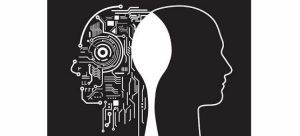It was the industrial revolution in the 1800s that changed the lifestyle of people and the way business happened. Today it is AI and Data Science. Take a domain where a large amount of data is being generated. You will definitely find Data Science transforming it drastically. Be it stock price analysis in finance or advertisement personalization in marketing or even oil and gas exploration.
They say with the internet, the ‘information asymmetry’ started to break. Meaning, hardly any information is limited to a particular group of individuals. But this abundance of information can be overwhelming. It is impossible to browse through 10000..s of google search results to find the best deal for your airfare. That’s where Data Science steps in. The following article highlights five ways in which data science is affecting web/content development.
New Versions
Previously, experiments on focus groups mainly dictated the demands a user might want in the apps. Users provide a lot of data about the app through online reviews and comments. Thanks to Data Science, this data is now being leveraged to gain insights about the user demands. Instead of relying on the strategic teams, systems are built to process this data and translate it to actionable insights.
A good thing about Machine Learning algorithms is that they get smarter with Data. For example, your Google keyboard automatically learns the slang words you use with your friends while texting even though they are not included in a standard dictionary.
Design
Until recently the design of websites and apps was based largely on the decisions of the web development and design teams. Placement of icons, menu, etc. This is being made more customer-centric by capturing minute details of customer interaction with the interface and analyzing this data.
For example, consider Facebook. If you think Facebook just records your name, birthdate, pictures, etc., then you need to know this –
Facebook tracks how you move the mouse on the computer screen. The social networking platform also admitted that it collects information about operating systems, hardware, software versions, battery levels, signal strength, available storage space, Bluetooth signals, file names and types, device Ids, browser and browser plugins (which is almost all of the information available on and about your device), from the users’ phones, TV and other connected devices.
-India Today article
Link to the article – https://www.indiatoday.in/technology/news/story/facebook-confirms-that-it-tracks-how-you-move-mouse-on-the-computer-screen-1258189-2018-06-12
Imagine the quality and quantity of insights one can generate with this amount of data.
Personalization
By integrating AI into a website, we personalize the user experience effectively. Complex algorithms like Deep Neural Networks are capable of processing hundreds of attributes like time of the day, age, location, etc to provide you experience on the platform that is just meant for you. A simple daily life example could be the amazing video recommendations by YouTube.
Websites can be made dynamic. A dynamic web page is a web page that displays different content each time it’s viewed. For example, the page may change with the time of day, the user that accesses the webpage, or the type of user interaction. According to McKinsey, Netflix saved $1 Billion in lost revenues in 2017 by using AI for video recommendation. Amazon leveraged automation to reduce click-to-ship time down by 225% or 15 minutes.
Developer’s Skill Set
Today, we have a boom of analytics tools of which quite a few go along with web development, like Google Analytics. With this new era of Data, everyone wants to lead this revolution. Companies are literally hunting for data talent. Under such a setting it is extremely important for developers to acquire additional skills to have an edge over other candidates.
Not only that, but web development tasks are becoming mundane. As a result, efforts are being made to make such tasks automated. Naturally, just banking on web development skills might not be a good choice. Developers are now actively looking to expand their skill set.
According to a survey, CMO.com, by Adobe, only 15% of companies are using AI in their businesses. 31% of those companies are willing to put this on their agenda within the next 12 months. Consequently, this area is just getting started. But at the same time, is growing fast.
Chatbots and Voice Assistants
According to a research, the chatbot market will grow at a rate of 27% CAGR in terms of revenue over the period between 2016 and 2024. The market is expected to rise from a valuation of US$113.0 mn in 2015 to US$994.5 mn in 2024. Companies are using chatbots to provide seamless customer interaction, thereby cutting down on inefficiencies in manual service. And these chatbots use machine learning, meaning they get better and better with use.
Bank of America made a chatbot named ‘Erica’ available on its app. Users can send text or voice messages to interact with it. The main goal is to help users create better money habits. For example, the bot might send you a text message saying that it has found an opportunity to save you $300.
E-commerce is seeing a growth of up to 25% in revenues when deploying a chatbot for customer interaction. Not only an increase in revenues, but companies are also experiencing a cost reduction of up to 29% on customer service. Internal usage of chatbots has helped companies save time on mundane and repetitive tasks. For example, internal usage of bots has benefitted companies like JPMorgan, saving them more than 36000 hours of manpower!
Naturally, web development coupled with data science can benefit enterprises immensely!



